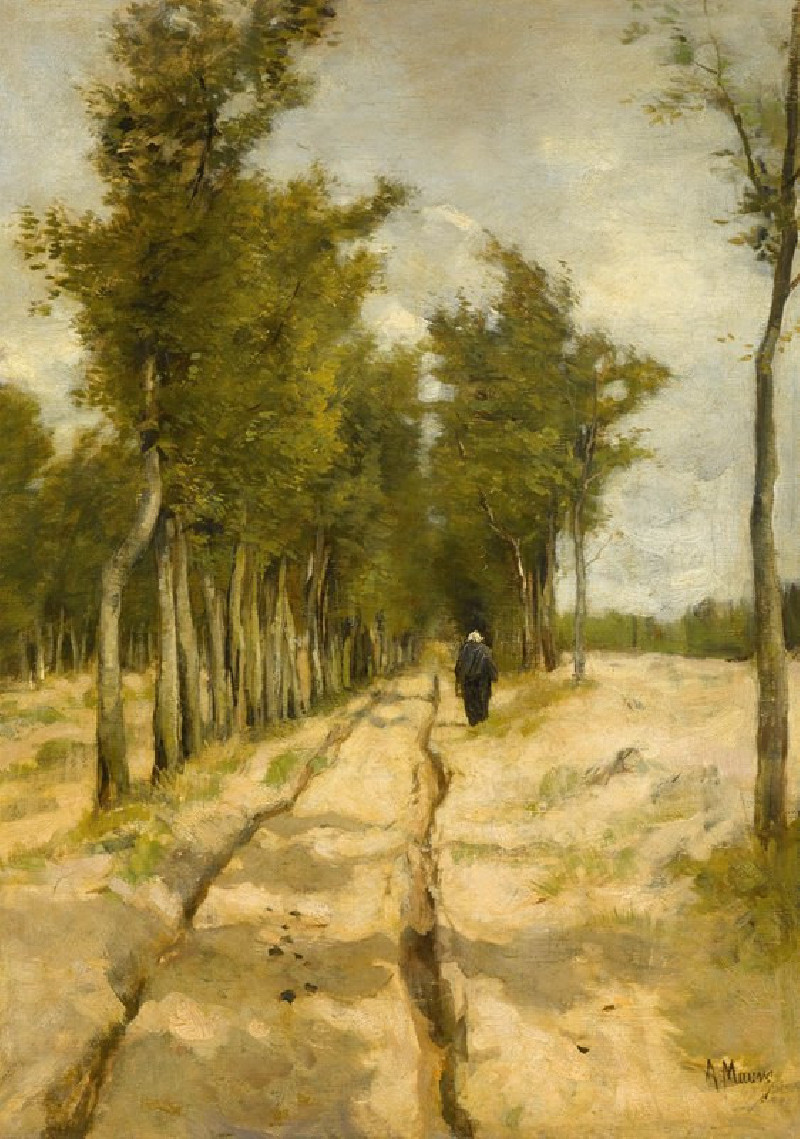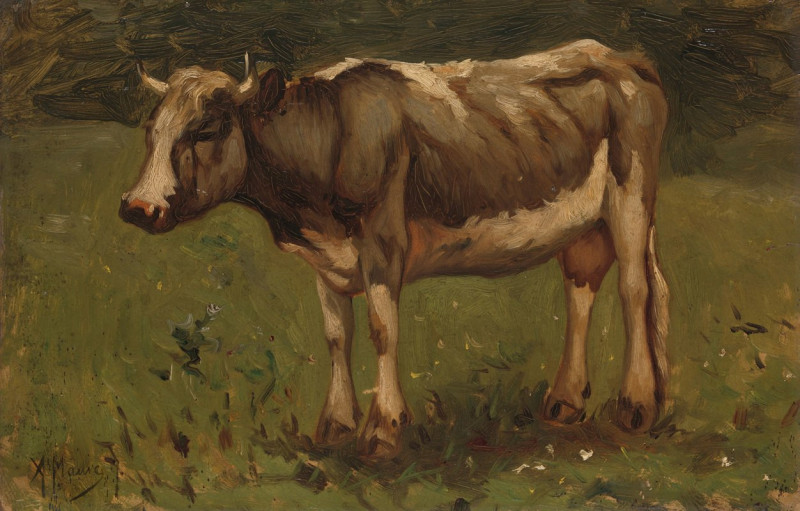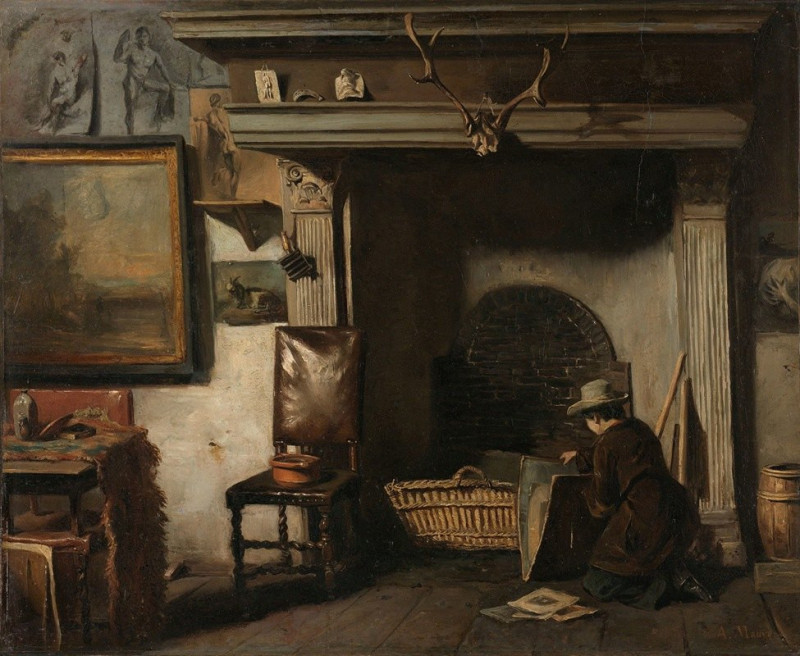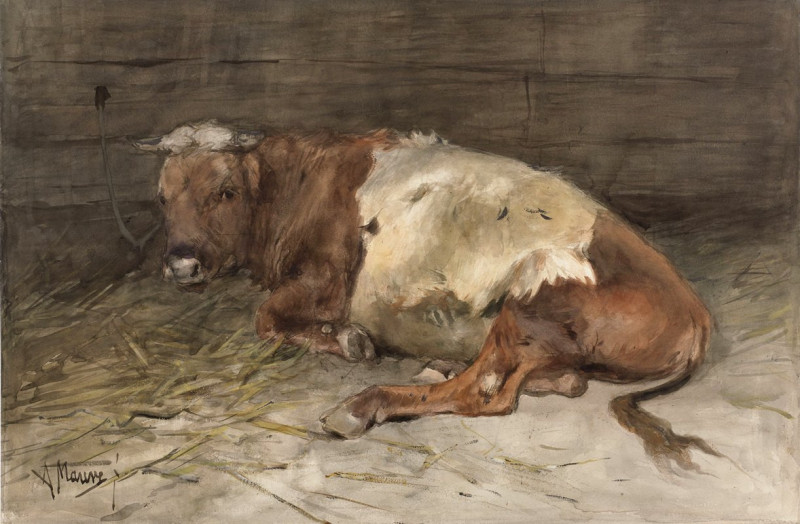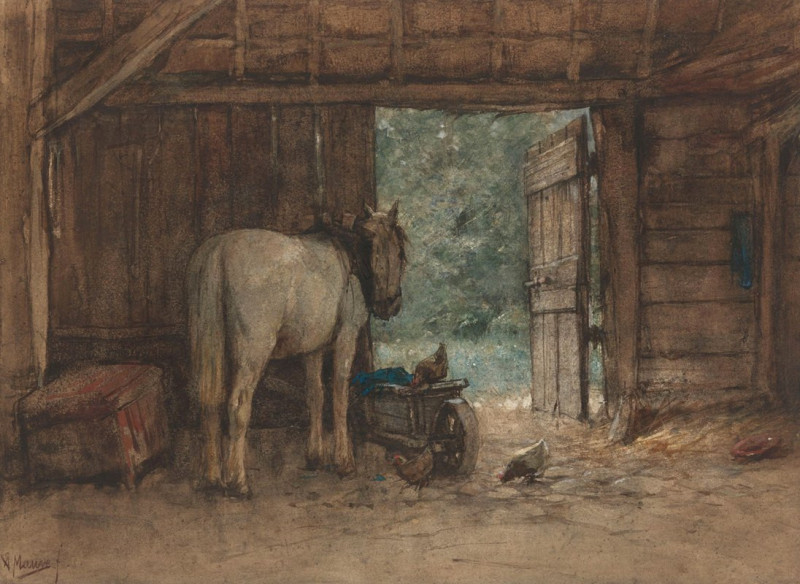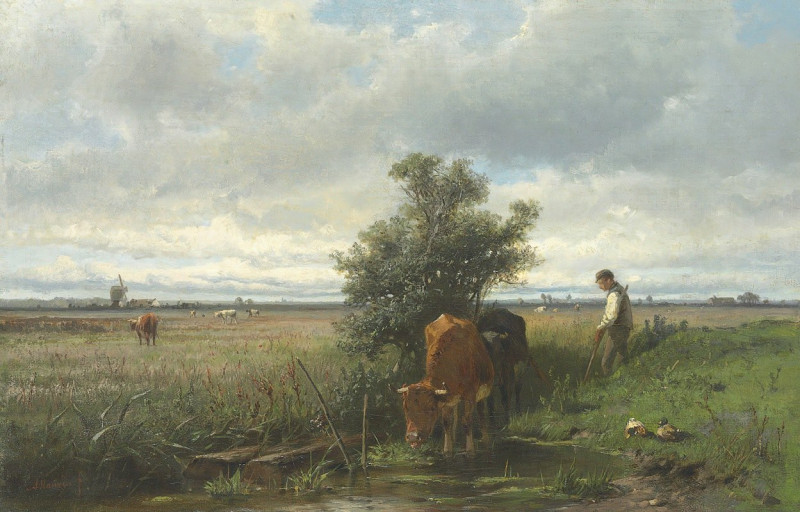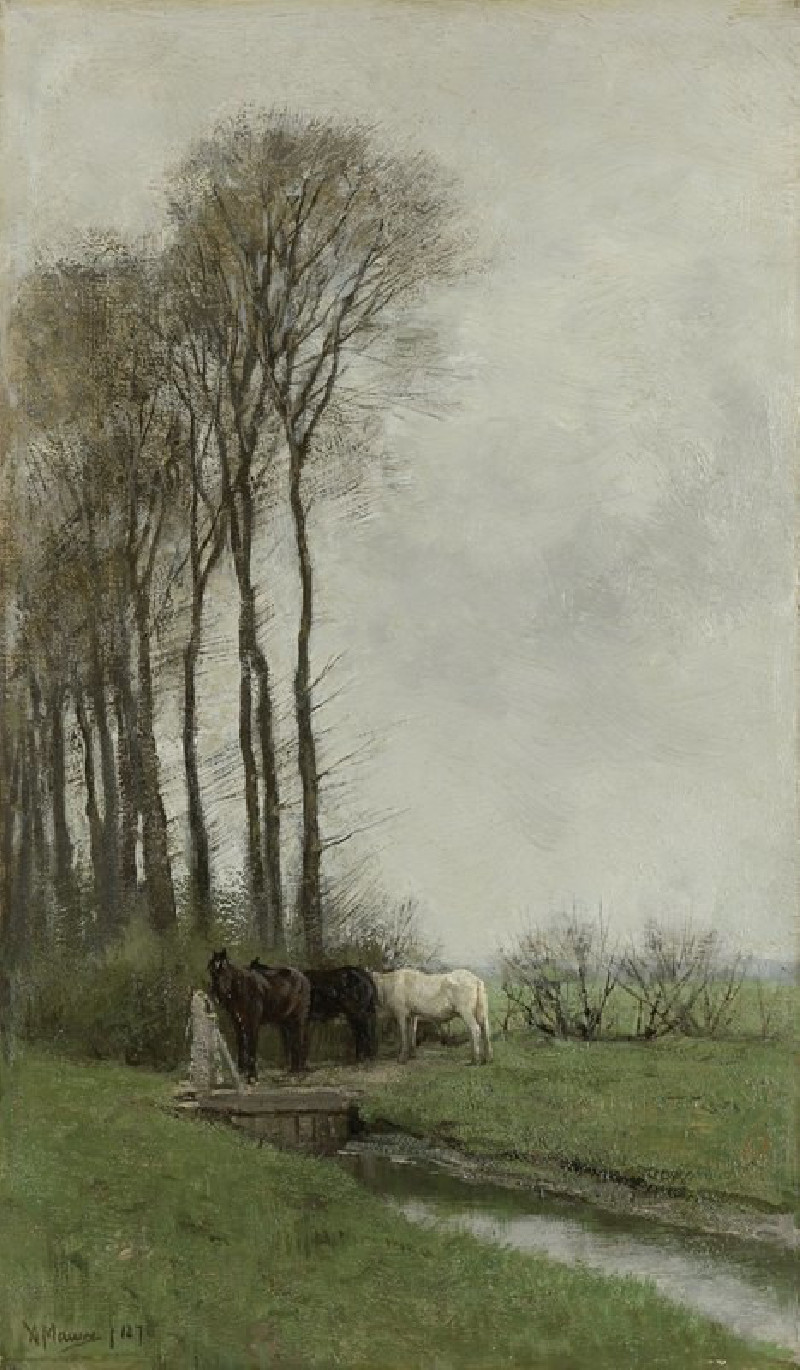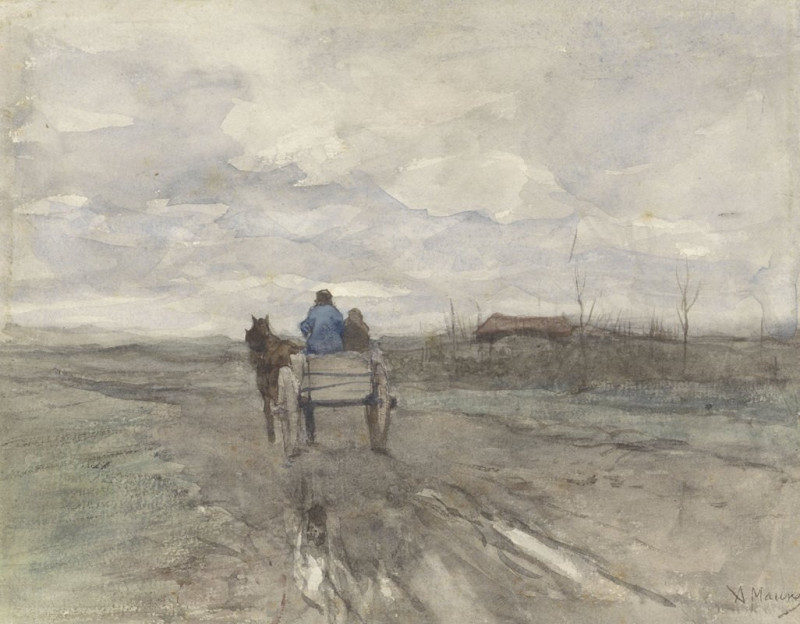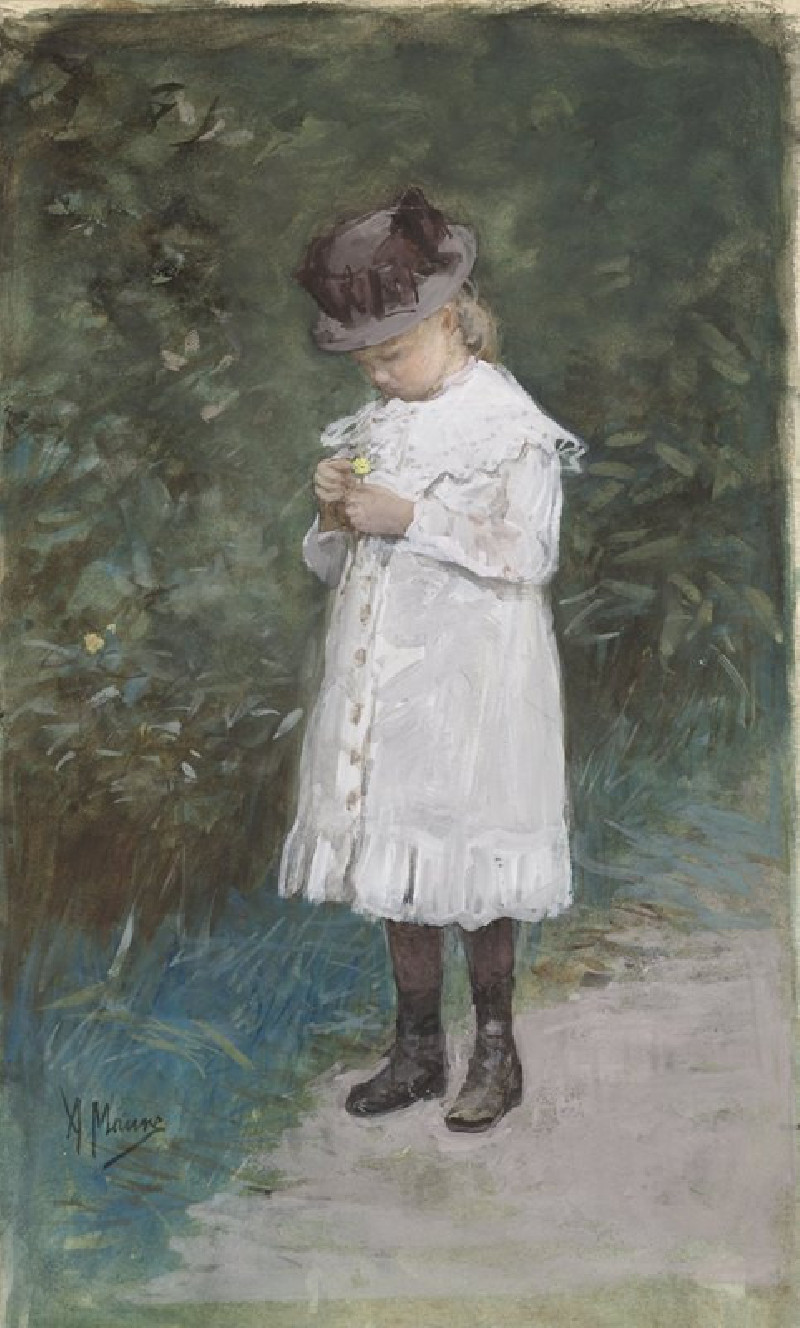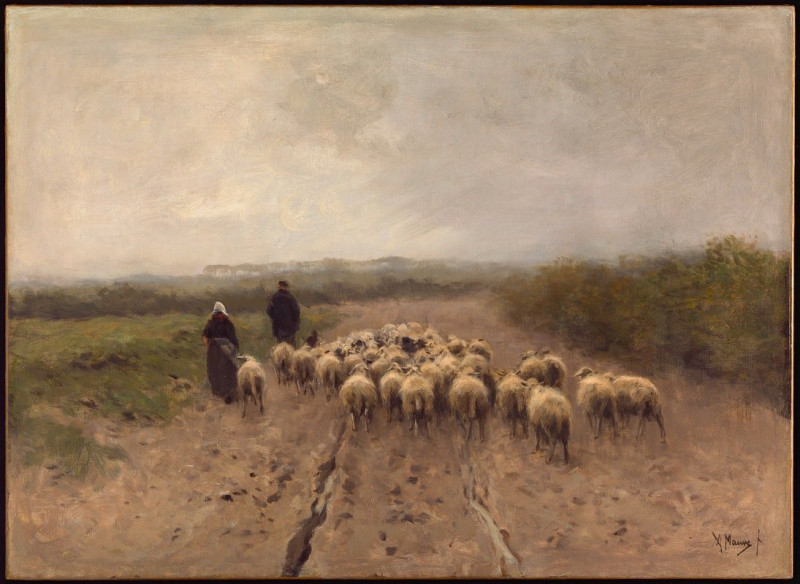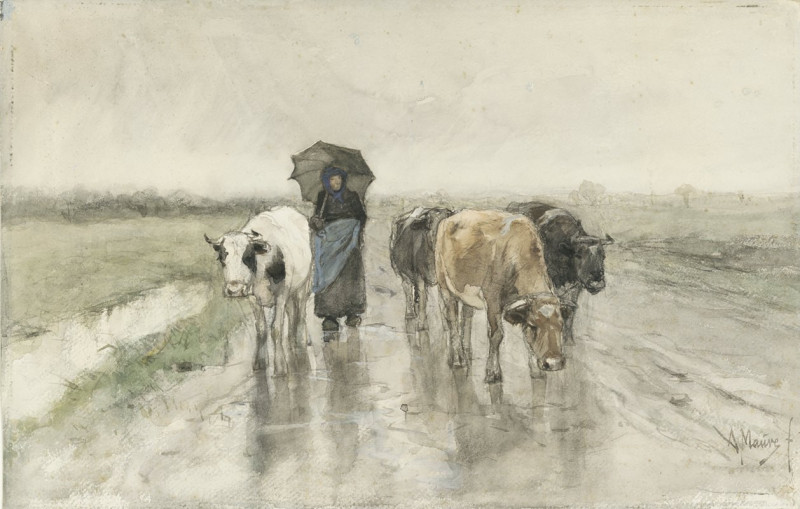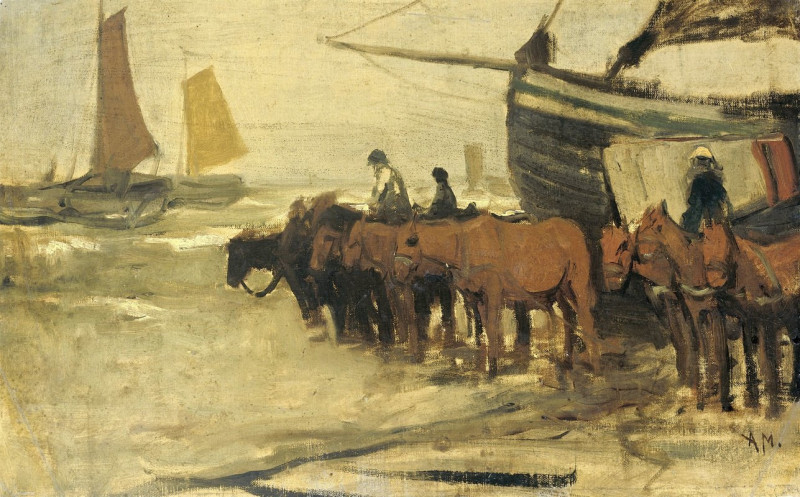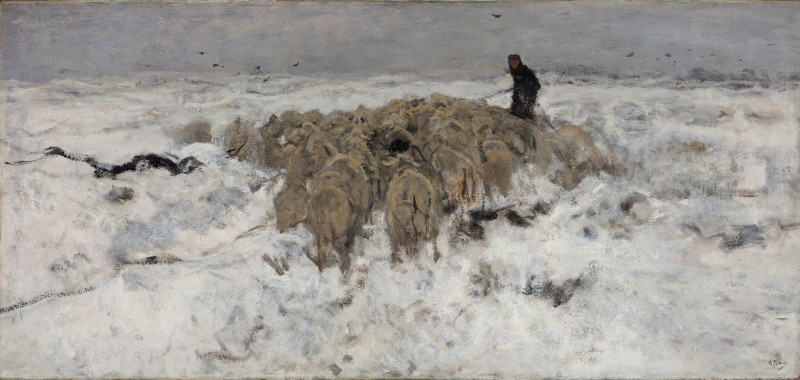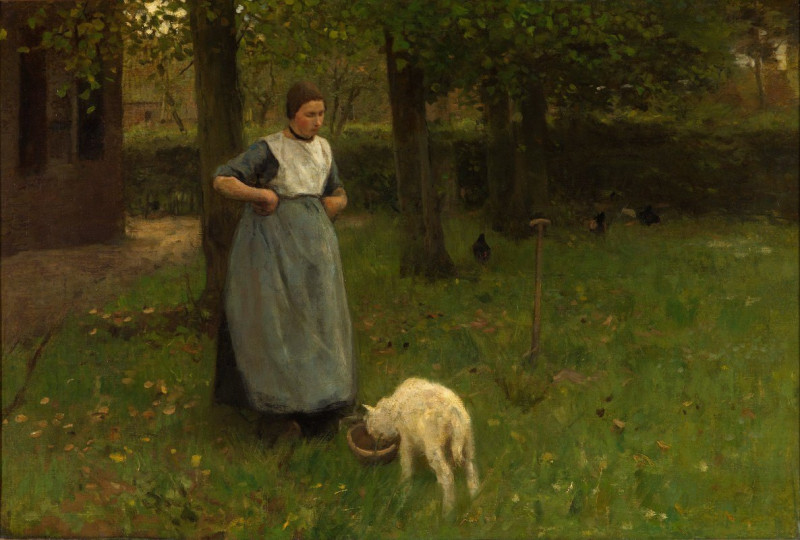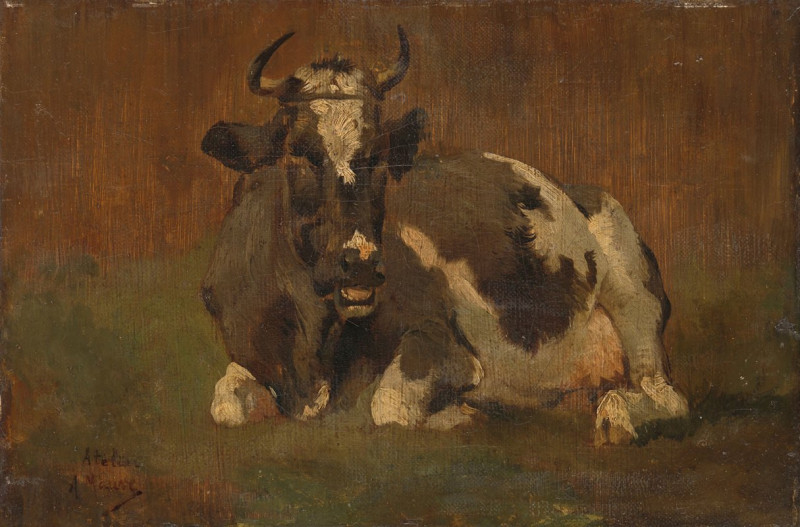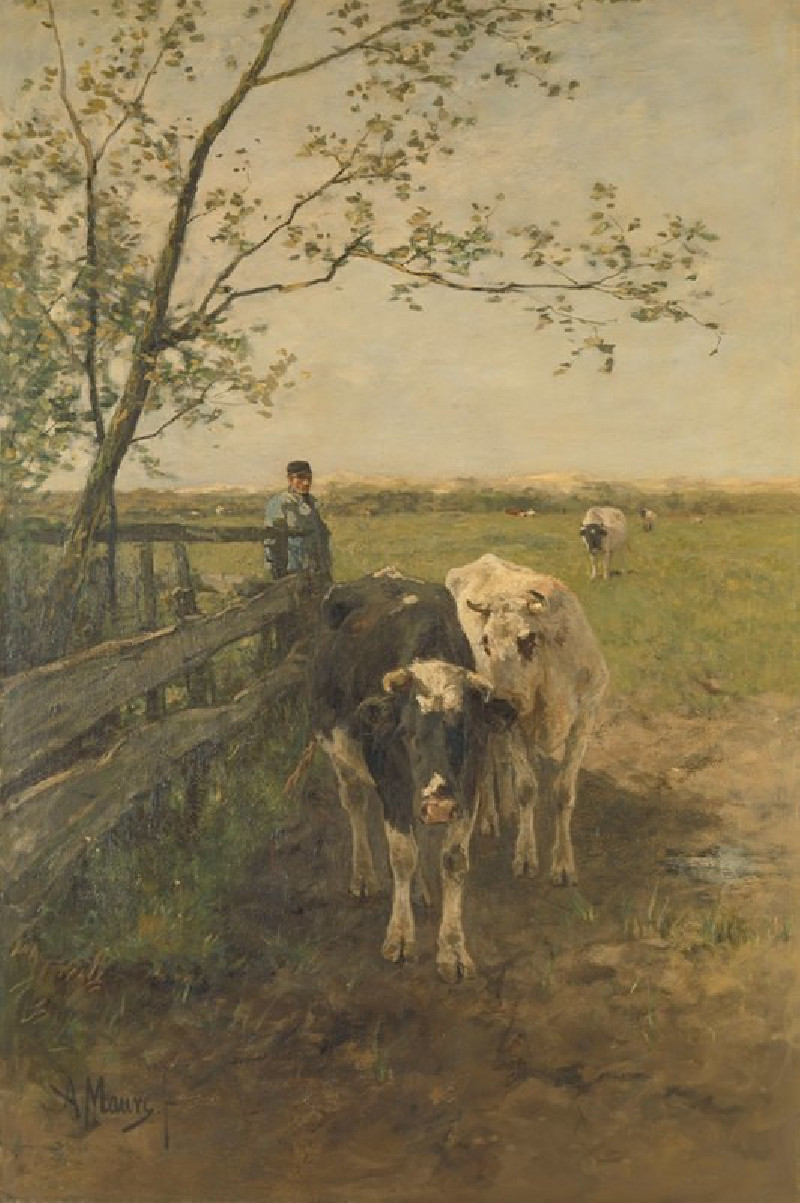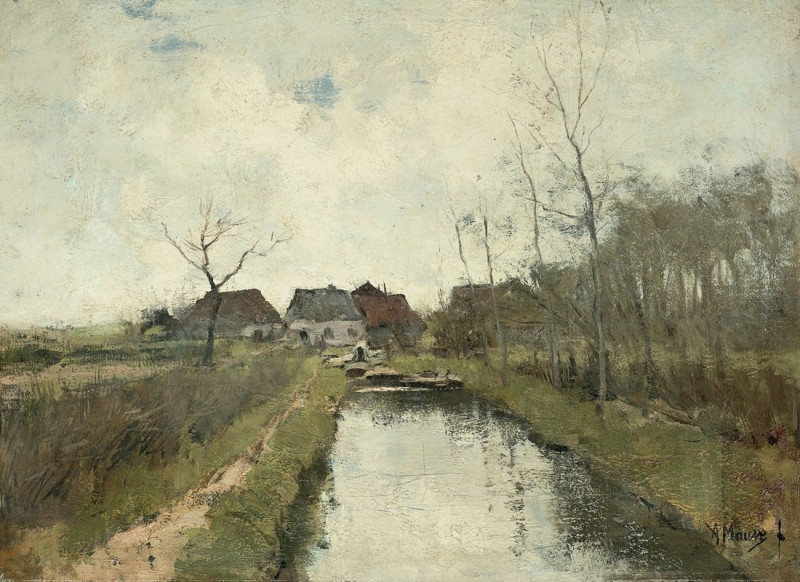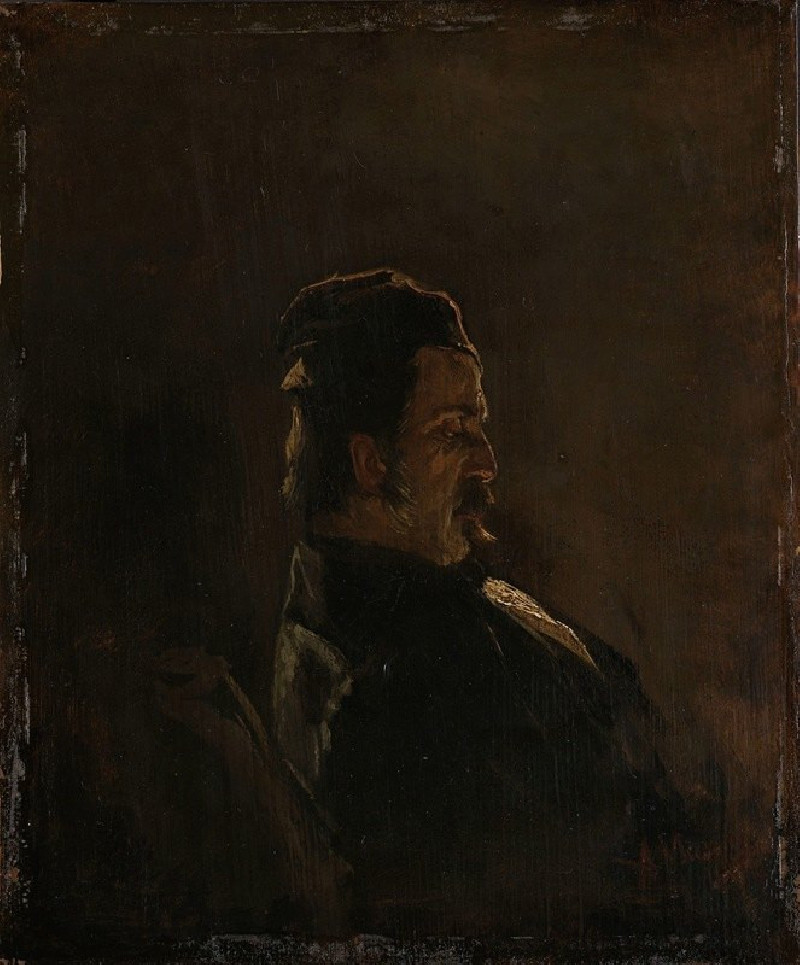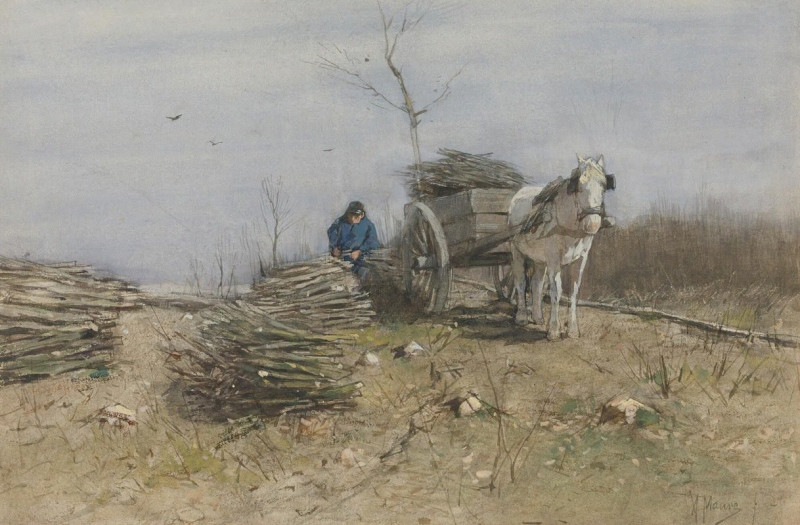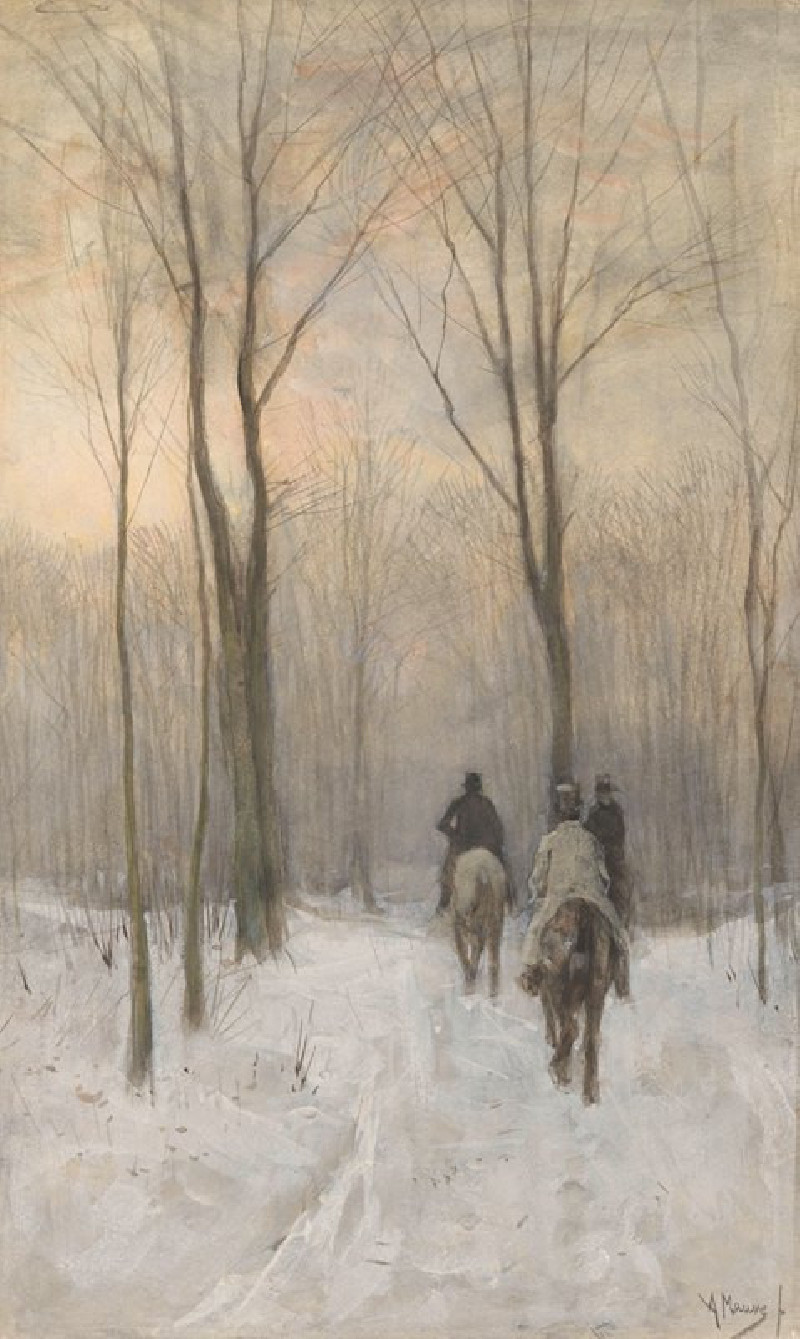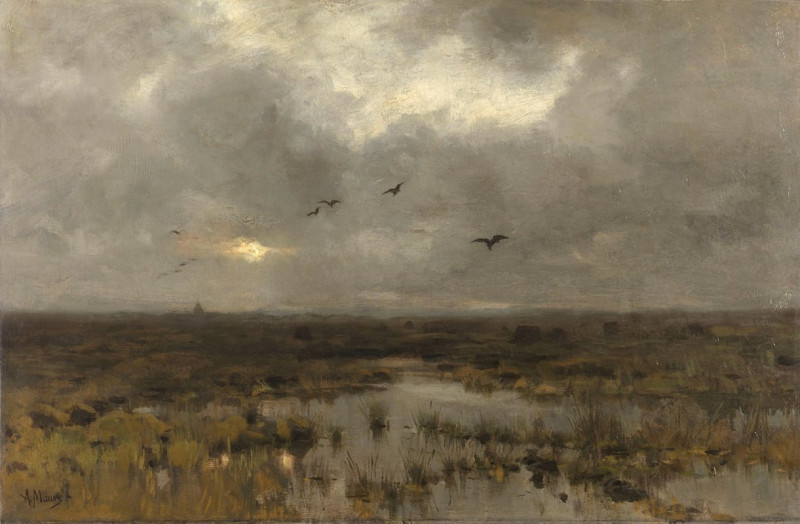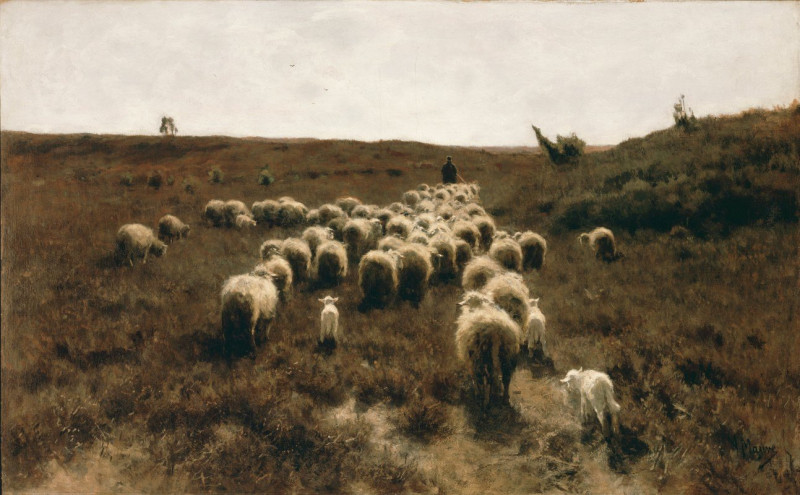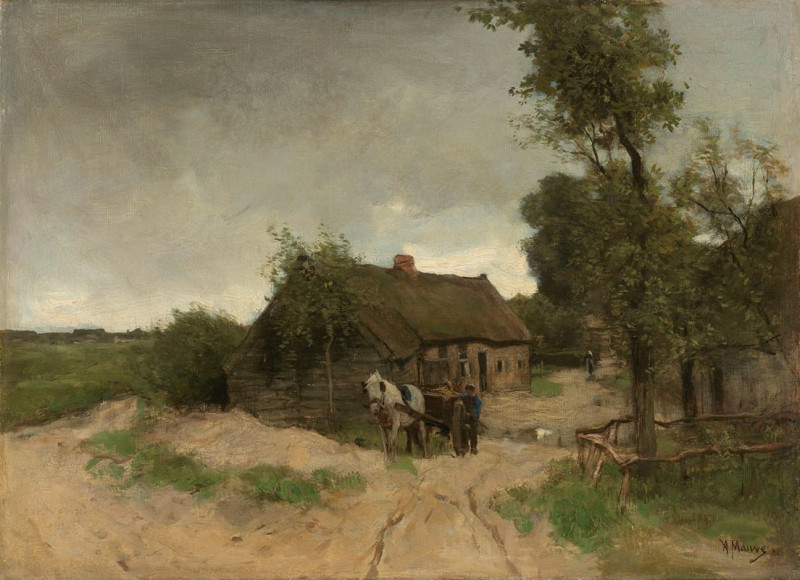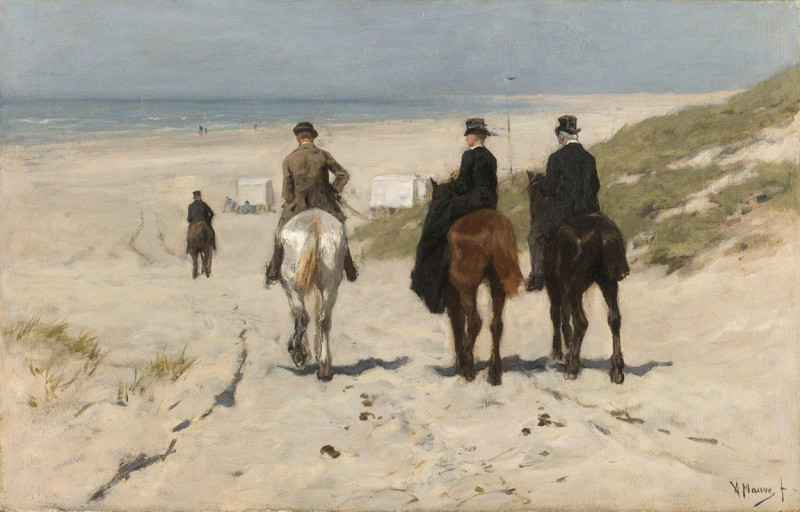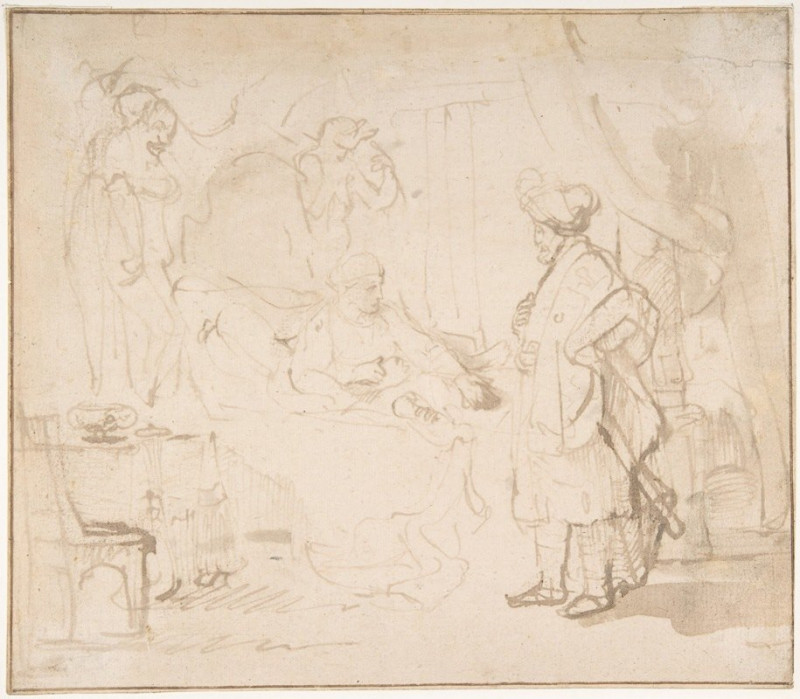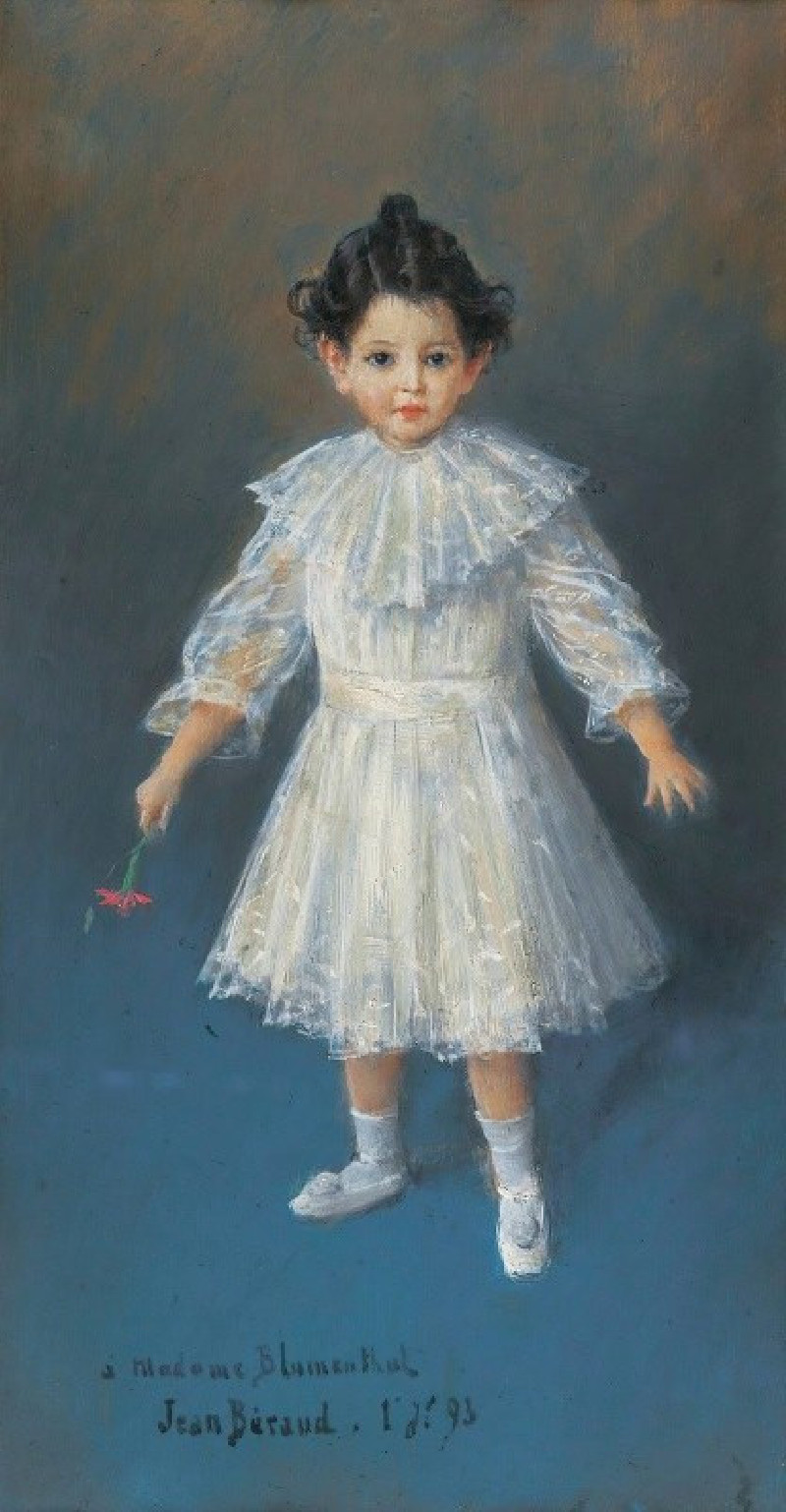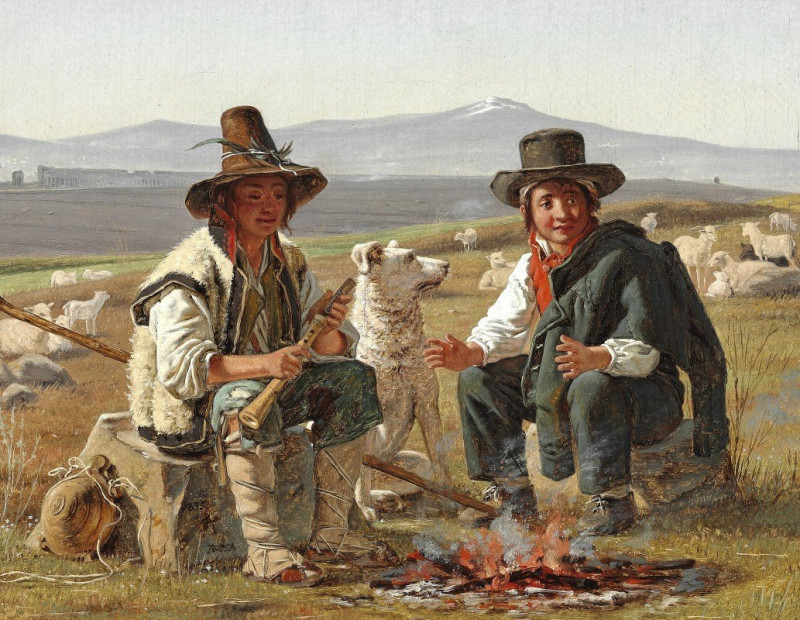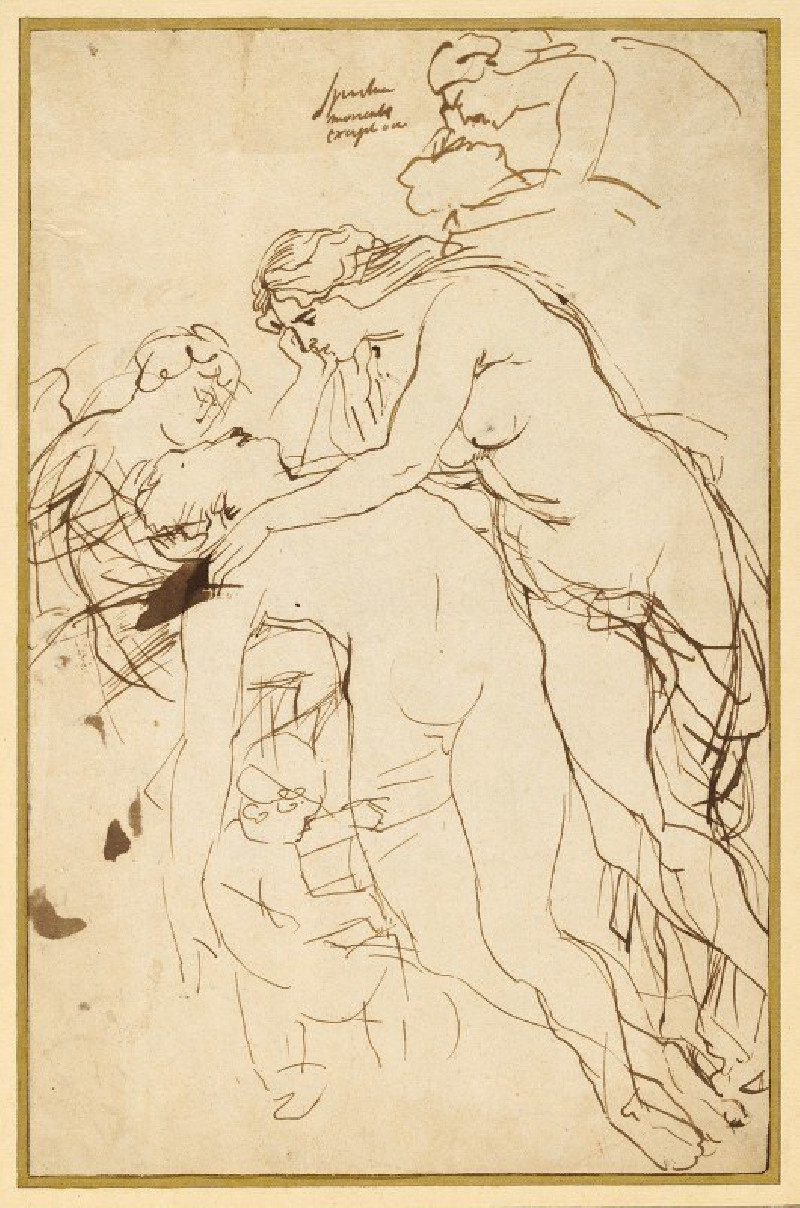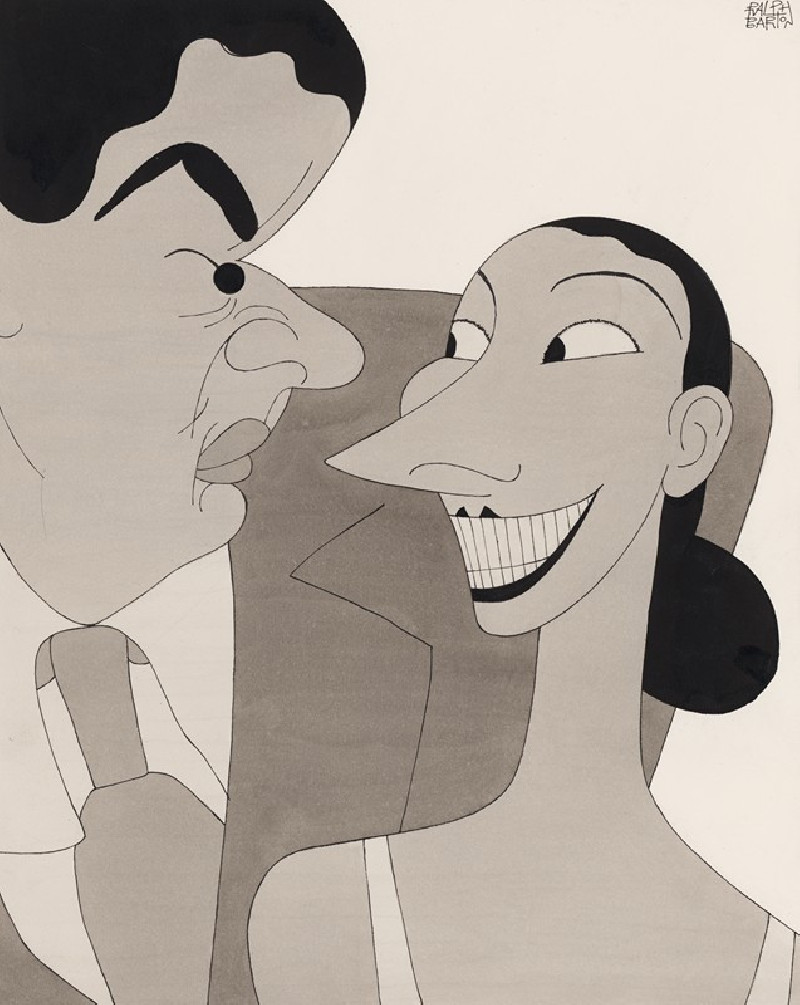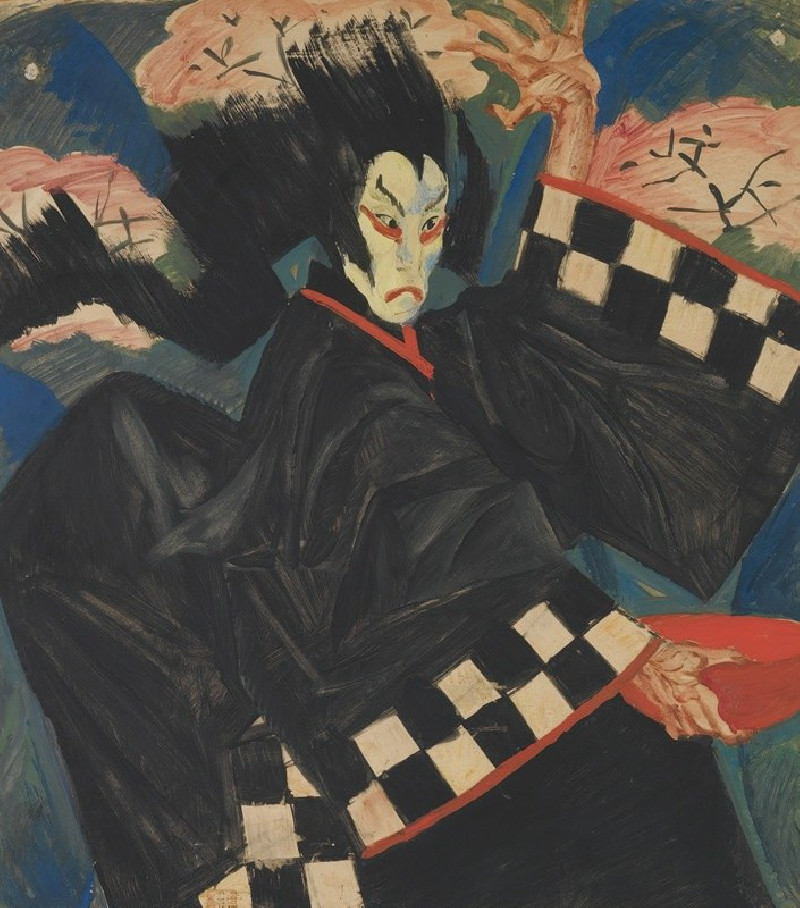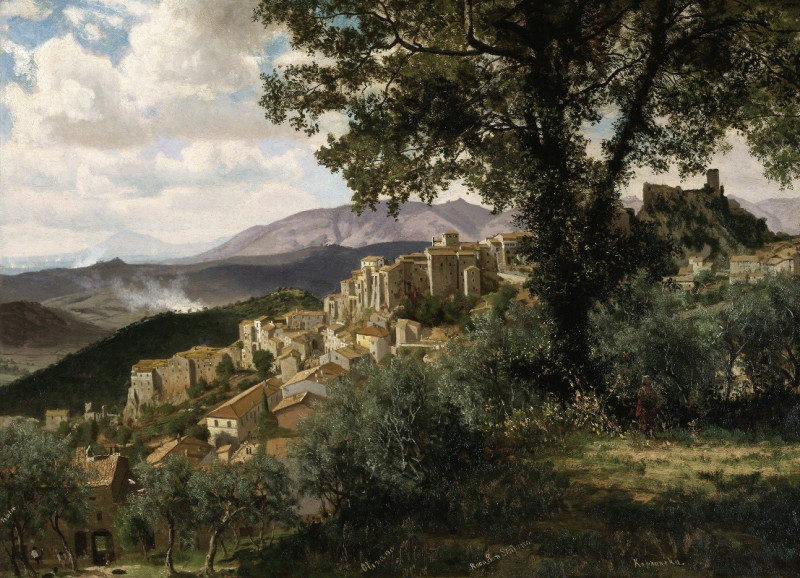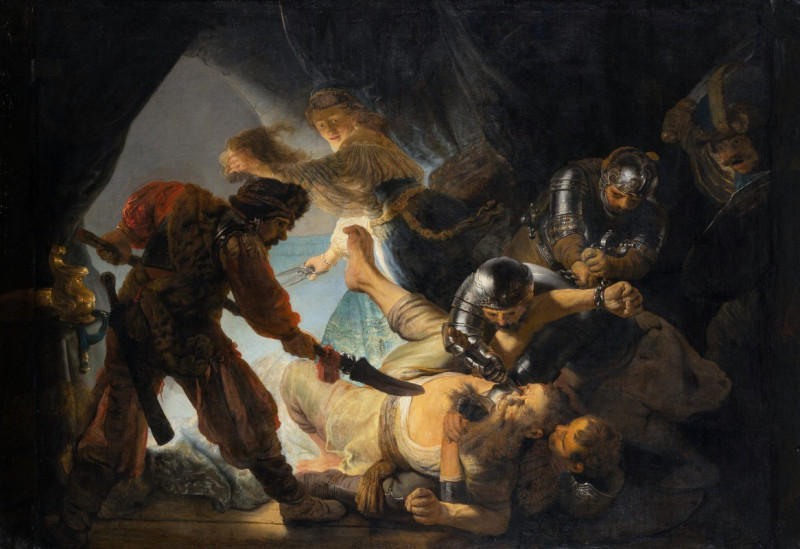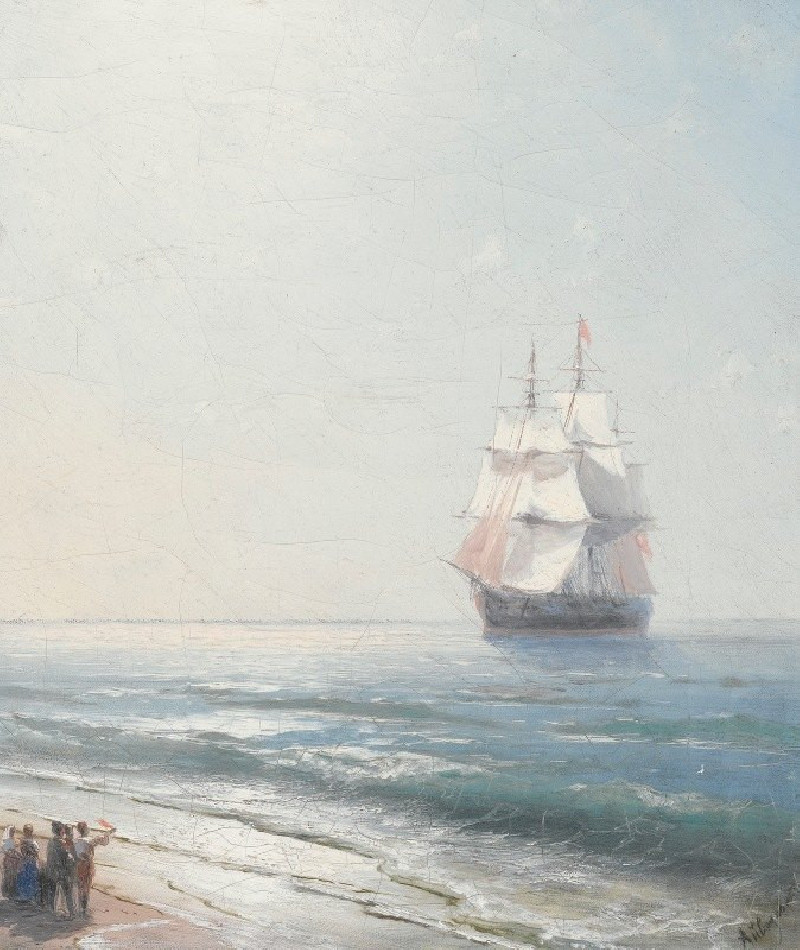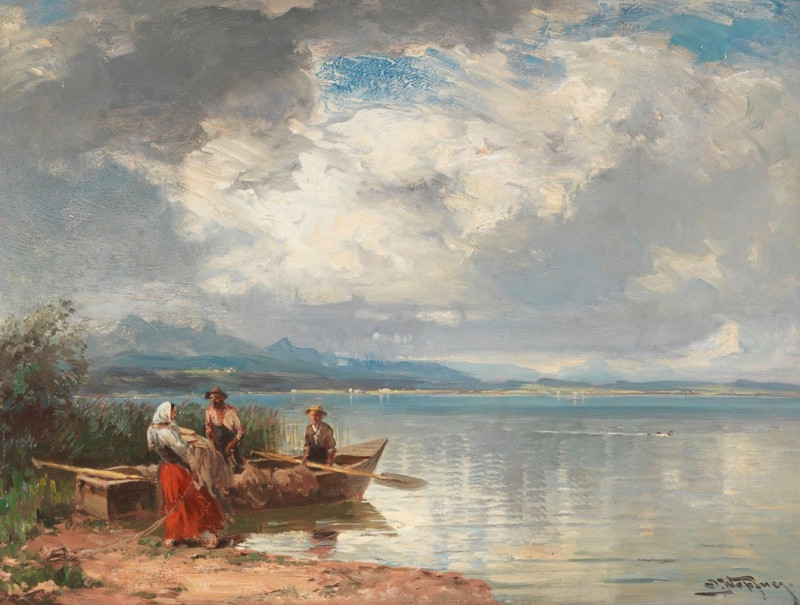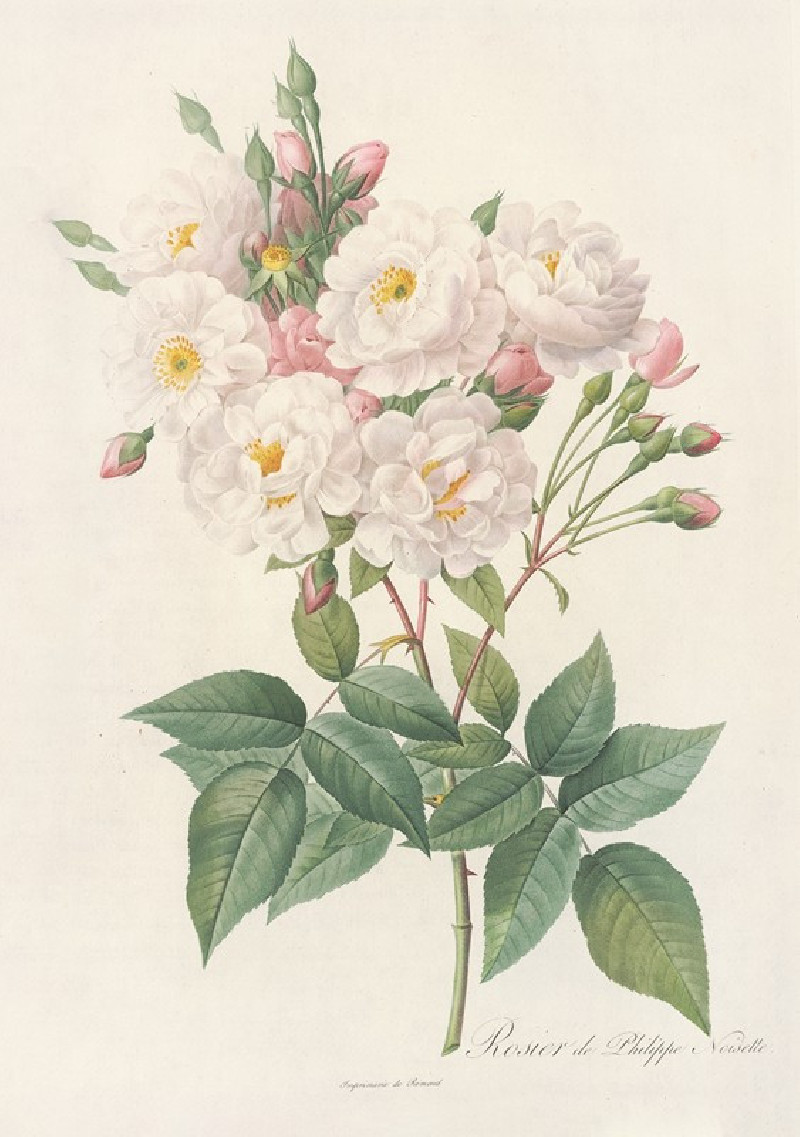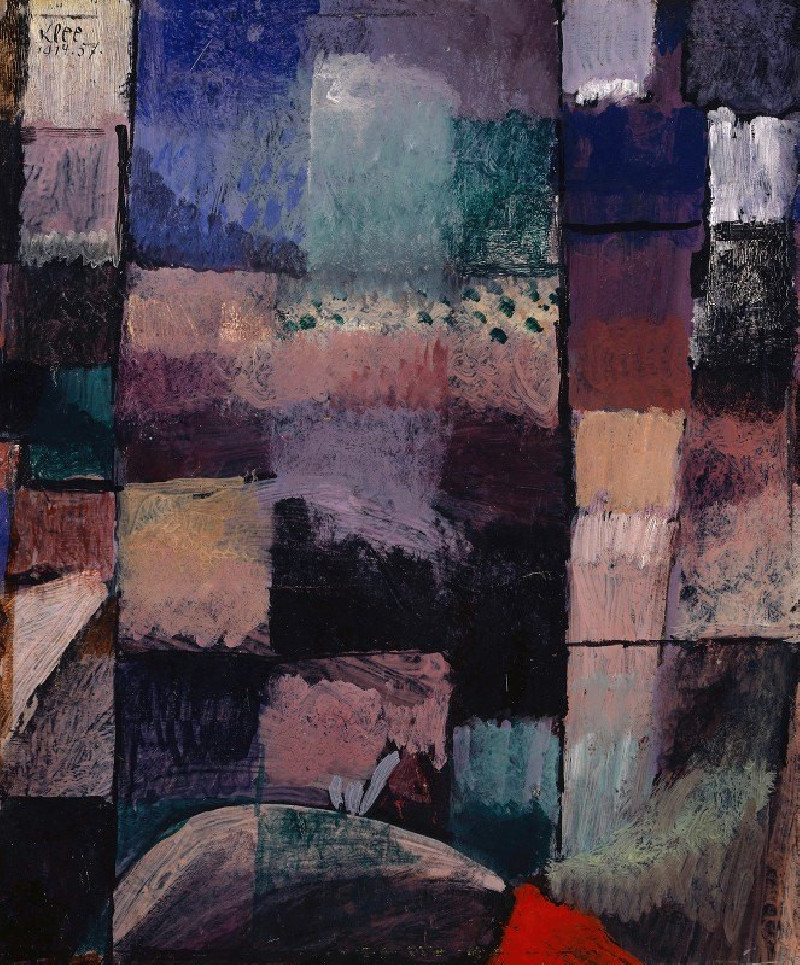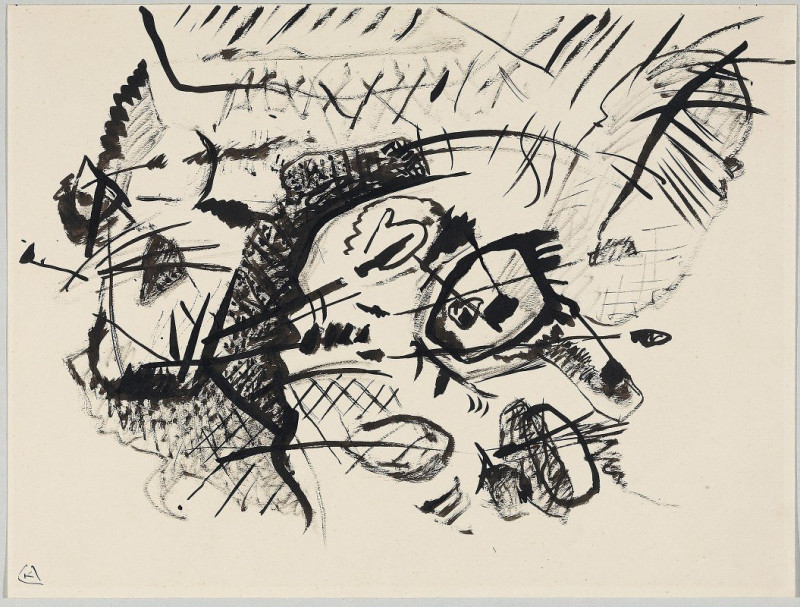De Torenlaan te Laren (1886)
Technique: Giclée quality print
Recommended by our customers
More about this artwork
Anton Mauve's painting, "De Torenlaan te Laren," is a splendid foray into Dutch landscape art, showcasing the tranquil beauty of the countryside in the late 19th century. Crafted in 1886, this painting epitomizes the tender precision and atmospheric sensitivity that Mauve, a leading figure of the Hague School, was renowned for.The artwork illustrates a serene pathway that stretches through a dense stand of trees. The perspective is drawn out in a manner that draws the viewer’s eye along the rugged path, leading to the silhouette of a solitary figure ambling away into the distance. This figure adds a sense of scale and quiet dynamism to the scene, providing a human element that is subtly poignant.The row of tall trees, painted with soft, textured brushstrokes, conveys a sense of gentle movement, with the sunlight filtering through the leaves, creating patterns on the path below. The naturalistic color palette of greens, browns, and muted blues evokes a feeling of peace and timelessness, typical of Mauve’s style."De Torenlaan te Laren" is not merely a depiction of a landscape; it is an invitation to contemplate the quiet and slower pace of life which characterizes the Dutch countryside.
Delivery
Returns
Anthonij "Anton" Rudolf Mauve (18 September 1838 – 5 February 1888) was a Dutch realist painter who was a leading member of the Hague School. He signed his paintings 'A. Mauve' or with a monogrammed 'A.M.'. A master colorist, he was a very significant early influence on his cousin-in-law Vincent van Gogh.
His best-known paintings depict peasants working in the fields. His paintings of flocks of sheep were especially popular with American patrons, so popular that a price differential developed between scenes of "sheep coming" and "sheep going".

